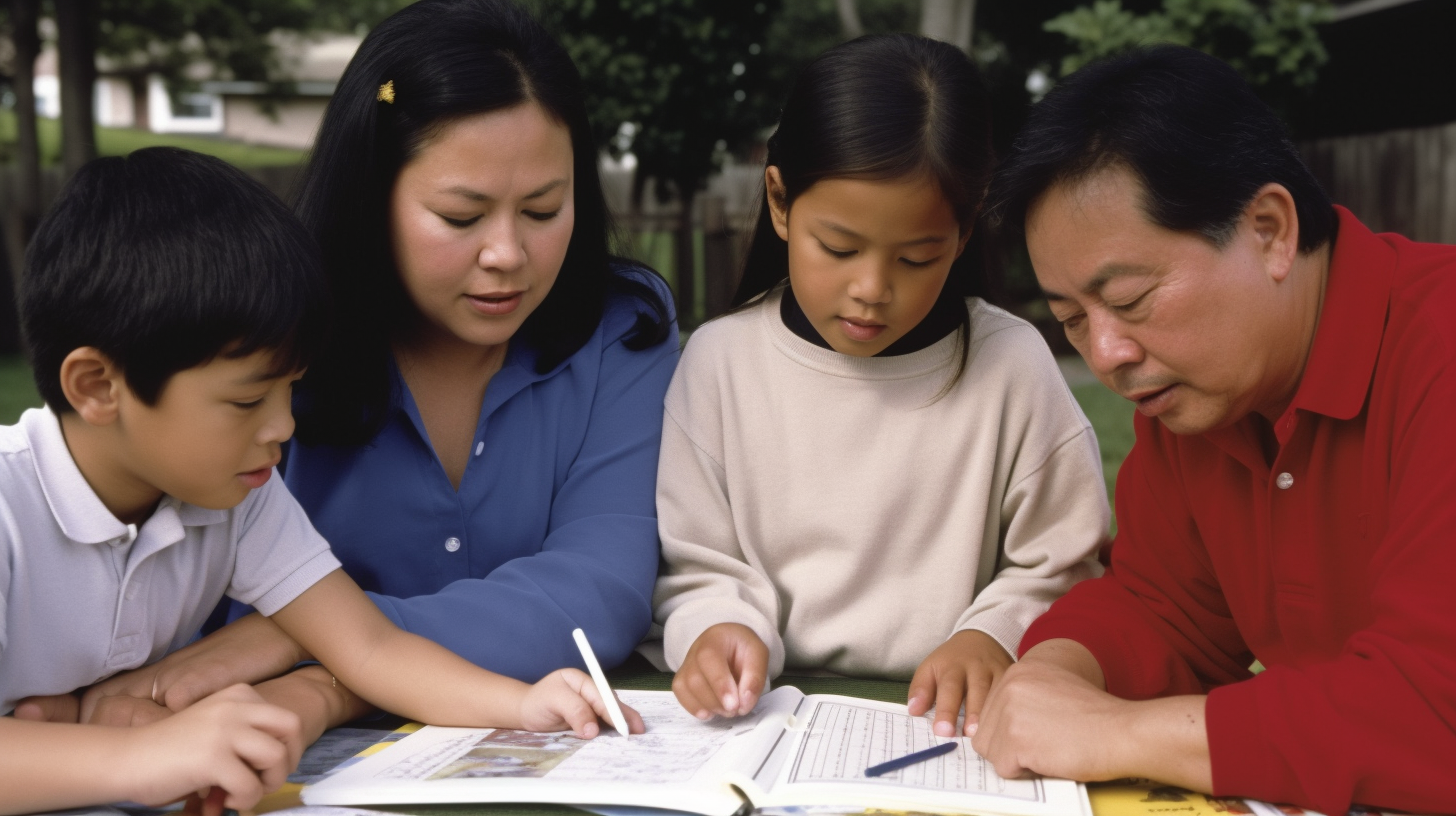Homeschooling is a method of education in which parents take on the role of educator and provide schooling for their children in the home environment. It is different from traditional schooling in that there is no set curriculum or requirements; parents can choose to teach whatever they see fit for their child. Homeschooling offers the flexibility to customize learning plans for each child and to tailor activities and educational goals to meet the needs of the individual. Parents can also take advantage of the many resources available online and off to facilitate learning in the home. Parents of homeschooled children may also involve their children in community activities, such as sports, music, or art, or the family may opt to go on educational field trips. Homeschooling can be an exciting and rewarding experience for both parents and children.

Understanding How Homeschooling Works
Homeschooling works by allowing families to customize the educational experience of their children, while providing flexibility to learn in ways that are most appropriate for them. Generally, parents act as the educators, complete with curriculum, activities, and assessments tailored to the needs of their children. Learning can be done through instruction in the home environment or through a combination of home and online instruction. Homeschooling also allows parents to teach at their own pace and tailor the learning to their children’s strengths and weaknesses. Parents are also able to choose the pedagogy that works best for their children, such as an immersion method where children read and learn in their native language, while learning a second or third language. Additionally, parents can use digital tools to supplement learning activities.
A. The Advantages of Homeschooling
Homeschooling offers parents a great deal of flexibility when it comes to their child’s education. The primary benefit of homeschooling is that parents can tailor the curriculum to match their own beliefs, values and interests. Parents can customize a learning plan that matches a student’s learning style and interests and provide the best possible educational opportunities. They can also choose to focus on certain topics and subjects, which allows for deeper learning opportunities.
Furthermore, homeschooling allows parents an additional level of control over their child’s safety and socialization. Parents can decide when and to what extent their children will experience physical and social interactions with others. They can ensure that their homeschooled children will only interact with people who share similar beliefs and values.
Another advantage of homeschooling is that parents have the freedom to choose when and how their children learn. Parents can adjust the learning schedule to meet their family’s needs and schedule field trips and other activities to supplement the child’s learning. Homeschooling also allows parents to take on a leadership role in their children’s education, providing them with guidance and feedback throughout the child’s learning process.
Finally, homeschooling can save parents a great deal of money. Homeschooling eliminates the need to pay tuition fees to private schools, and many materials necessary for homeschooling are often available at considerably lower costs than traditional schooling.
B. Different Types of Homeschooling
Homeschooling comes in several different forms, each of which has its own unique approach to teaching and learning. Types of homeschooling include:
1. Traditional Homeschooling – This is the most popular form of homeschooling and typically follows a structured curriculum such as that used in public or private schools. It generally involves the use of textbooks, and parents also plan and oversee the course of study.
2. Unschooling – Unschooling is a less structured approach to learning and usually involves a child guiding his or her own education. Instead of following textbooks and a predetermined curriculum, the child learns by doing.
3. Distance Learning – Distance learning combines the structure of traditional homeschooling with the convenience of online learning. Parents typically purchase a curriculum and materials, and the student completes assignments via computer or correspondence.
4. Eclectic Homeschooling – This type of homeschooling is a combination of multiple methods, such as traditional homeschooling, unschooling, and distance learning. Parents create the curriculum and learning environment rather than relying on a predetermined program.
5. Virtual Schools – Virtual schools involve online instruction from certified teachers in a virtual classroom setting. Students typically receive instruction at home but also interact with their teachers and classmates remotely.
C. The Difference Between Homeschooling and Other Alternatives
Homeschooling is a unique form of education that allows parents to customize their child’s learning experience based on their own family needs and values. This form of education allows a child to be exposed to a variety of learning experiences that are tailored to their individual needs and interests. Typically, homeschooling allows for more flexibility and creativity compared to other forms of instruction such as traditional tuition-based private or public schooling.
In addition, homeschooling allows the parent to decide what curriculum and materials are used to teach their children. This means that parents have more control over the type of instruction their children receive and can focus on specific topics or concepts as needed. Homeschooling also allows for the flexibility of one-on-one instruction and teaching in small groups, which can make learning more engaging for children.
Unlike other forms of instruction, homeschooling allows parents to teach their children at a pace that is comfortable for them which can be beneficial in helping children develop to their full potential in a supportive and encouraging learning environment. Finally, homeschooling can also help children develop values and beliefs based on religious/spiritual beliefs that may be different from the values promoted by traditional schools.

Preparing for Homeschooling
Homeschooling is a personalized approach to education that allows parents to teach their children in the way that best suits their individual needs and interests. It is important to be well-prepared when you’re starting out with homeschooling. Here are some steps to consider as you prepare for homeschooling:
1. Learn about the options that are available for homeschooling. There are many different ways to homeschool, so it’s important to research the different types of curriculums and approaches available.
2. Understand the local laws and regulations regarding homeschooling. Every state has different laws and regulations when it comes to homeschooling. It’s important to understand these laws and ensure that you comply with all of the necessary requirements.
3. Establish a learning space within your home. Dedicating a space for learning will help make the most of the homeschooling experience.
4. Set yourself a homeschooling budget. Start by creating a budget based on your available resources, and consider the options available for supplies, equipment, and curriculum.
5. Consider how you will track your child’s progress. Establish a system for record keeping and progress tracking.
6. Connect with other homeschooling families. There are many local, state, and national support groups available for homeschoolers. Joining these groups can provide an excellent resource for guidance, advice, and support.
A. Finding the Right Educational Materials and Curriculum
In homeschooling, it is important to find the right educational materials and curriculum to fit your child’s learning style and needs. A variety of homeschooling resources are available, from online courses and textbooks to workbooks and virtual tools. Parents should research each resource carefully to ensure it is age-appropriate, meets the desired academic standards, and is of the highest quality. It is also important to consider the child’s interests when choosing educational materials. This is often done through conversations with the student and by reviewing materials before selecting them. Additionally, parents should also be aware of any regulations that may apply within their school district or state when using outside educational resources. Additionally, there are many homeschooling networks and websites available, which offer support and advice when it comes to finding the best materials and curriculum for homeschooling.
B. Establishing a Learning Environment
In the homeschooling context, setting up a learning environment means creating a space where your child can focus on their studies in privacy, comfort, and focus. This might mean dedicating a special room for homeschooling, or carving out a space in an existing room where your child can work on their studies. Additionally, it may mean stocking that area with books, online resources, crafts, and other materials that help support your child’s learning. It’s also important to make sure that the learning environment is comfortable for your child—this could mean adding pillows, blankets, and other personal touches to make it cozy. Finally, setting up a learning environment may include establishing a clear schedule and consistent study habits so that your child can stay organized and motivated.
C. Making a Homeschooling Plan
Homeschooling is a flexible system of education that allows families to design their own curriculum and adapt it to suit their needs and desires. A successful homeschool plan should reflect the educational goals and values of the family, while also aligning with applicable state and local homeschool regulations.
When planning for homeschooling, it’s important to consider how much time is available for instruction, the educational needs of each student, extracurricular activities and scheduling, the learning style of each student, the style and approach to education the family prefers, and the resources available. The plan should include the expectations for each student, the daily and weekly schedule, goals for parents and families, and the curricula to be used. It’s also important to plan for assessment to be sure the student is making progress. Assessment can includes both formal and informal assessments such as portfolios, standardized tests, observational evidence, interviews with parents, and engagement with other homeschoolers. Developing a homeschooling plan requires research and time, but it is an essential part of successful homeschooling. A written plan serves as both a guide and a record of how and why the family chooses to educate their children.

How to Balance Homeschooling With Other Activities
Homeschooling can take up a significant amount of time, but it’s also important to balance that time with other activities, such as time with friends or extracurriculars. Having a well-rounded life helps keep kids engaged with school, and allows for some variety in their day-to-day life.
The amount of time that homeschooling requires varies from family to family. Typically, core academics should account for about 4-5 hours of schoolwork a day, which makes it easier to find time to pursue other activities. It’s important to build in breaks throughout the day so kids have the opportunity to take part in different activities. This could include physical activity, creative activities, music, or time with friends.
When it comes to extracurriculars, there are numerous options depending on the age of the child. If your child is partaking in organized sports, then the frequency and duration of those activities should be taken into account while homeschooling. Similarly, if your child is involved in music or theatre programs, the schedule of those activities should be planned around with homeschooling in mind.
When planning activities around a homeschooling schedule, it’s important to ensure that all activities and academics are balanced. There should be a healthy balance of education, physical activity, and free time every day. Making sure that your child has time for all types of activities helps ensure a well-rounded education and personal development. Academic learning is crucial, but so too are physical health, creative expression, social interaction, and emotional well-being.
A. Setting Aside Time for Social Interaction
Homeschooling parents may set aside specific times for social interaction, such as attending co-op classes, local field trips, outdoor events, and other activities that involve other homeschooled children and parents. This allows parents to meet up with other families and help their children develop and grow their social interactions with other groups and children with similar interests in a safe, supportive environment. Additionally, some states offer special activities, such as clubs, sports, support groups, and even recreation centers where homeschooled children can enjoy socializing in a safe, non-threatening environment.
B. Creating a Schedule for Homeschooling and Other Activities
In homeschooling, creating a schedule is critical in ensuring that the student learns the material they need to, meets the standards that align with the state or region, and creates a healthy balance between studies and other activities. Schedules can vary depending on the needs of the student, so they should be tailored to the individual.
Generally, the schedule should include regularly scheduled academic instruction, time for work on academic assignments and projects, time for physical activity, recreational activities, and any extracurriculars the student may have or be interested in. It may also be helpful to schedule regular breaks, nutritious meals, and adequate sleep. Each day should also include a schedule summary and a review of the student’s goals for that day. This can help a student track their progress and better understand the expectations placed on them, as well as make it easier for them to plan the rest of their day. A homeschooling schedule should also be regularly reviewed and adjusted as needed. Over time, as the child learns or interests evolve, the schedule can be adapted and changed to reflect these shifts.
C. Managing Time and Schedules
Homeschooling families manage their time and schedules in a variety of ways depending on the family’s individual needs and goals, but some general guidelines apply. Firstly, it’s important to develop a plan. This plan should include weekday and weekend activities, a set start and end time for school that works with family schedules, breaks throughout the day, and a way to track progress. Parents can provide a structure to help their children manage their time and set their own personal goals. Many families choose to follow a “block” style of scheduling, where larger chunks of time are set aside for different subject areas. Planning ahead and having an agenda for the day gives kids a sense of security and establishes routines. Additionally, day planners, scheduling apps, and online calendars can help kids stay organized and help the entire family coordinate their days.
Final Thoughts
Homeschooling can be an effective means of providing a quality education for children, and it can be tailored to meet the needs of each family and individual. The structure of homeschooling offers a flexibility that makes it possible for families to customize the curriculum to the individual goals and learning styles of their children. Homeschoolers can also access a wide variety of curriculum options, from online classes to locally available resources, so they can tailor their education to the needs of each student. With better access to resources and assistance from professional organizations, homeschooling parents can be sure their children are receiving a thorough and well-rounded education.
